Leighton Moss & Warton Crag Nature Reserves.

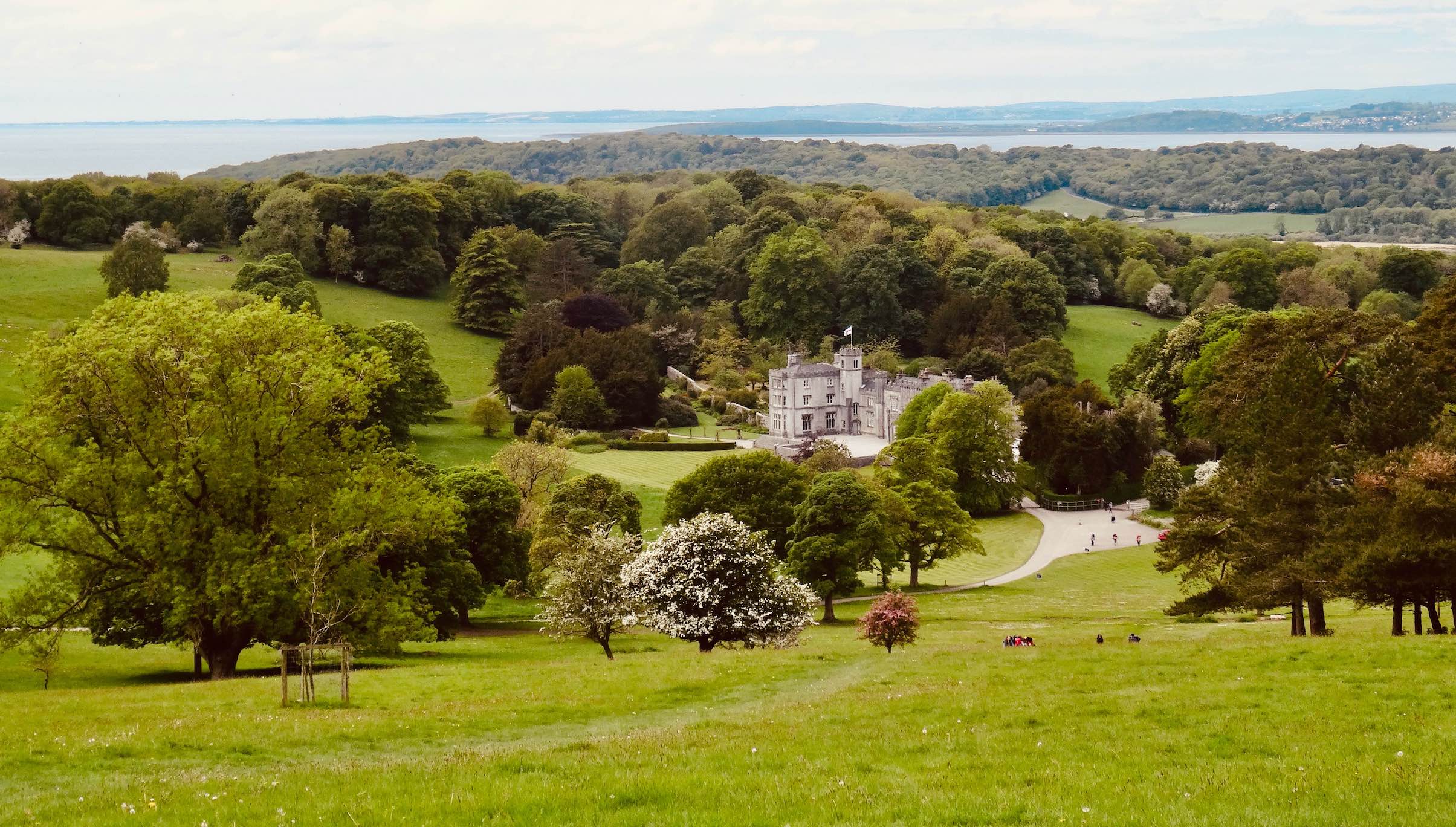
Leighton Moss & Warton Crag Nature Reserves, Lancashire, England.
May 2019.
It was a warm afternoon as Uncle D and I set off on a hike from the village of Silverdale. Ok, it wasn’t exactly brimming with sunshine. Nor was it a proper blue sky day. But it was perfectly fine weather for getting to grips with nature, especially by English standards.
I’d only been in Lancashire for a few days, but was already loving the vibe of northwest England. My visit had been soaked in history, from the castle and witches of Lancaster to the 1940s-channeled cinematic delights of Carnforth. Now, in the interests of keeping things fresh, it felt right to be in the great outdoors tackling some of the region’s most impressive nature reserves.
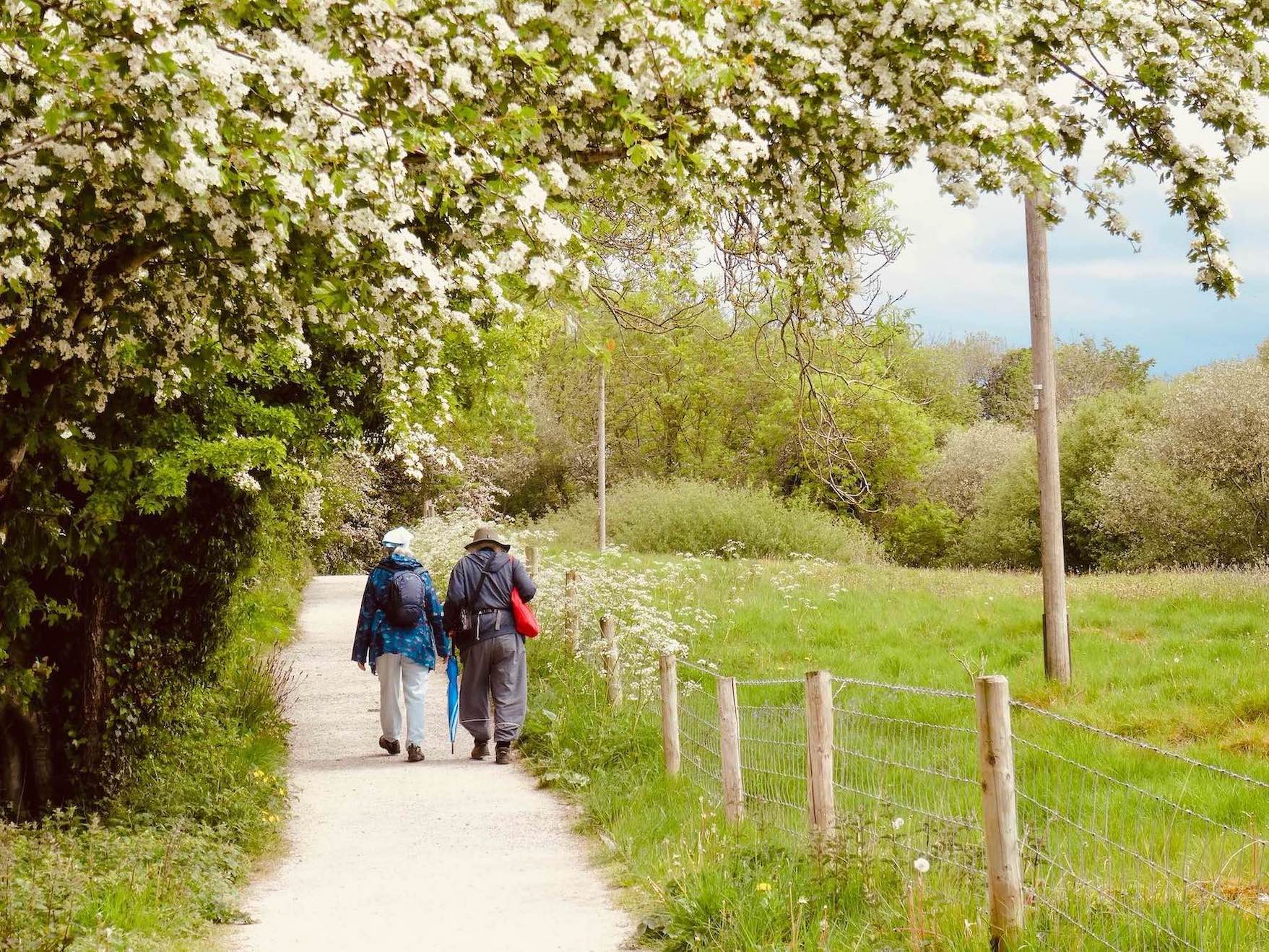
Leighton Moss Nature Reserve.
Moreover, someone had even been kind enough to name the first stretch of our hike after me! Indeed Leighton Moss Nature Reserve is a stunning area of dotted woodland, rolling fields and extended wetland. A chunk of Lancashire that has been under the protection of the RSPB (Royal Society for the Protection of Birds) since 1964. In fact, just a few minutes into our walk, we spotted a park keeper wearing an RSPB jacket.
Leighton Moss & Warton Crag Nature Reserves.
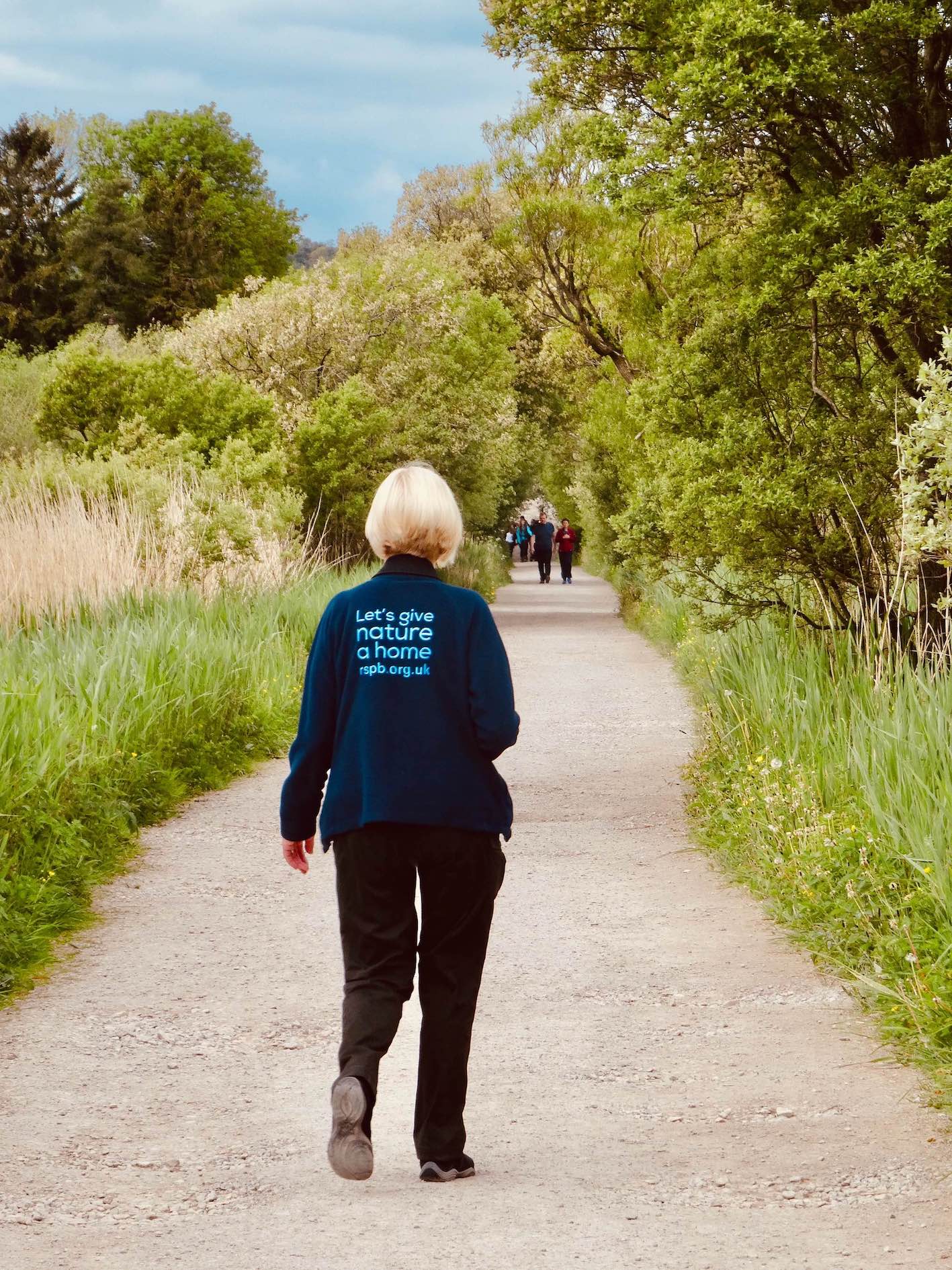
Leighton Moss Nature Reserve.
One reason Leighton Moss fell under protection is that it hosts one of England’s largest areas of reed beds. This provides essential habitats for a wide variety of animals, including dozens of bird species.

Leighton Moss Nature Reserve.
The RSPB also does a good job telling you about the reserve’s various residents. This was particularly useful to a simpleton like me who doesn’t know a Water rail from a Spoonbill.
One of many info boards (pictured below) focuses on the bittern, whose deep squawk can be heard from up to three miles away. This is usually to draw in the ladies, or to warn other male bitterns to stay out of his territory. Currently the bittern population is flourishing in the reserve after being critically endangered in the 1990s.

Leighton Moss Nature Reserve.
Furthermore, the reserve is home to seven wooden hides where visitors can observe the local wildlife at play. We popped into one that day, but were unable to grab a coveted bench spot.
Exploring Lancashire.

Leighton Moss Nature Reserve.
Serious birdwatchers had even brought their own binoculars, a vast improvement on my trusty Sony Cybershot. Nevertheless, I was able to hone in on the reeds with a few closeish shots.

Leighton Moss Nature Reserve.
By the hide, another information board enlightened me to what’s going on under the water, well away from the attention of my lens. There, lives a sizeable community of European Eels, quite incredible creatures that start out as eggs 4000 miles away in The Bahamas.
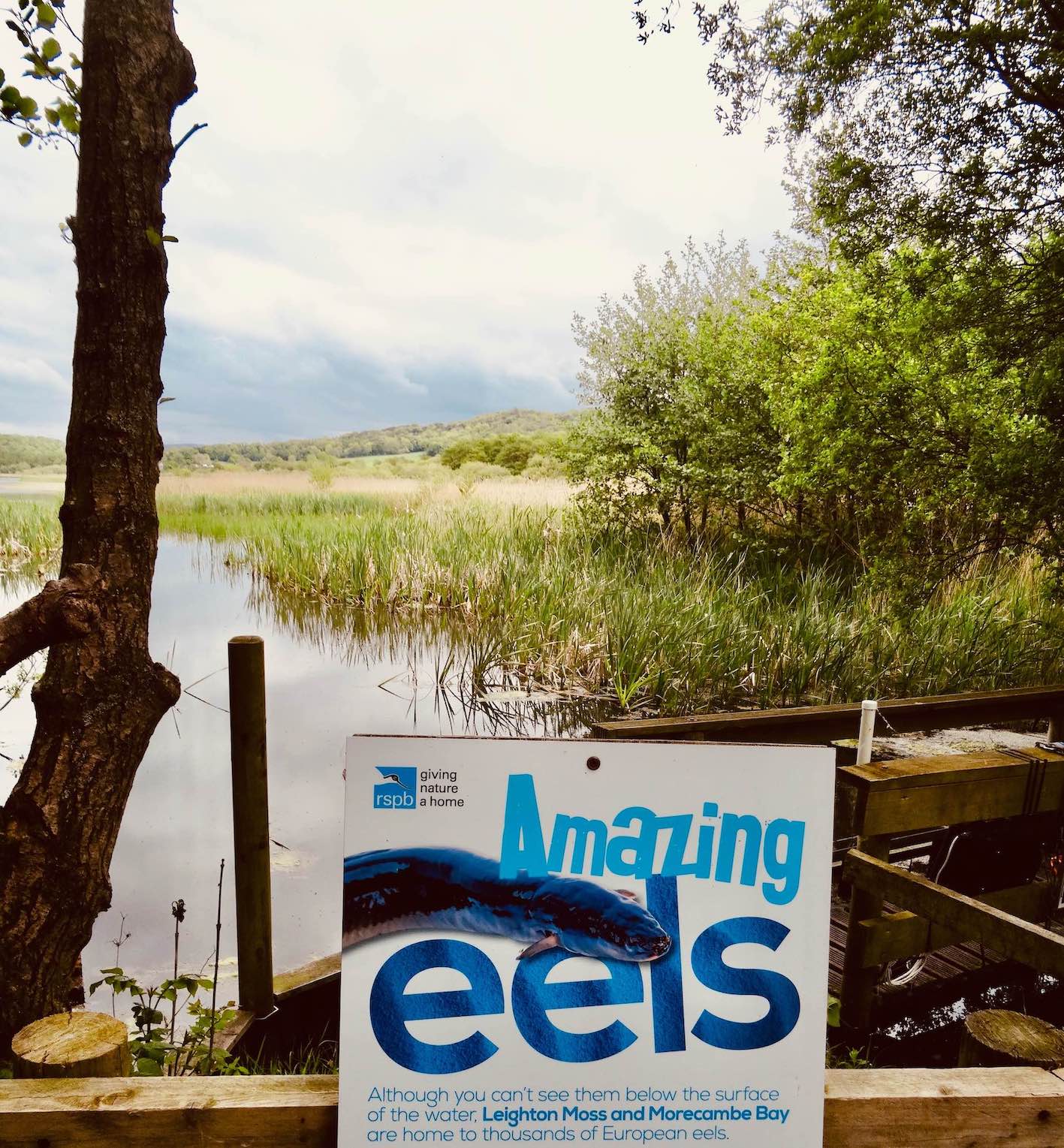
Leighton Moss Nature Reserve.
When the egg hatches into larvae, it drifts towards UK shores, a process that takes around 300 days. Next the larvae transforms into glass eels that search for fresh water. Then they turn into miniature eels, known as elvers, before eventually becoming adults. Finally, they set off on the return journey to The Bahamas in order to breed.
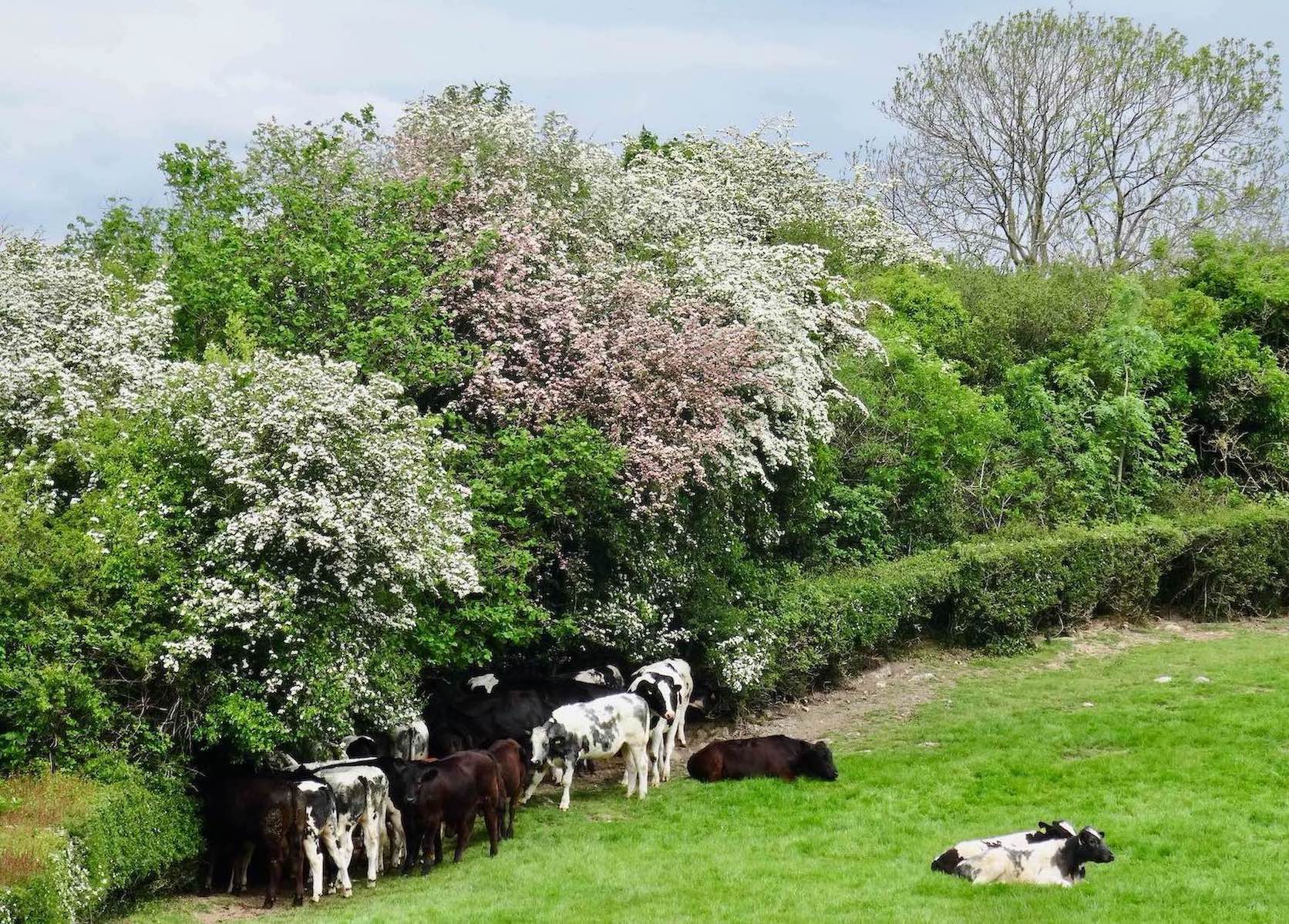
Leighton Moss Nature Reserve.
Back on the trail, we passed a number of lush green fields with grazing sheep and cows. There were some wonderful smells as we progressed, such as the heady fragrance of meadowsweet. This flowering plant often finds its way into herbal medicines because of its useful antacid properties.

Meadowsweet.
A short while later we arrived at none other than Leighton Hall, an historic country house built in the late 1750s. Originally constructed for the wealthy Towneley family, it later came under the ownership of Mr. Richard Gillow. He was the grandson of Robert Gillow, the hugely successful owner of Gillows of Lancaster and London.
Leighton Moss & Warton Crag Nature Reserves.

Leighton Hall.
Back in those days the land that is now Leighton Moss was Gillow’s very own private playground. However, much of it was little more than marshland. Thus Gillow ordered the land to be drained so that he could turn it into farmland.
And so the grounds soon became one of northwest England’s most successful grain farms. Known as The Golden Valley, its reputation blossomed until 1918 when flooding brought production to a standstill. Draining it again, apparently, was simply not economical. Consequently, the land became little more than a duck shooting range for Leighton Hall’s wealthy owners.

Leighton Moss Nature Reserve.
I would have loved to tour Leighton Hall, but alas it was closed that day. Next time, Gadget. Hence Uncle D and I pushed on up the neighbouring steep hill, which made for some great views looking back down at the house.
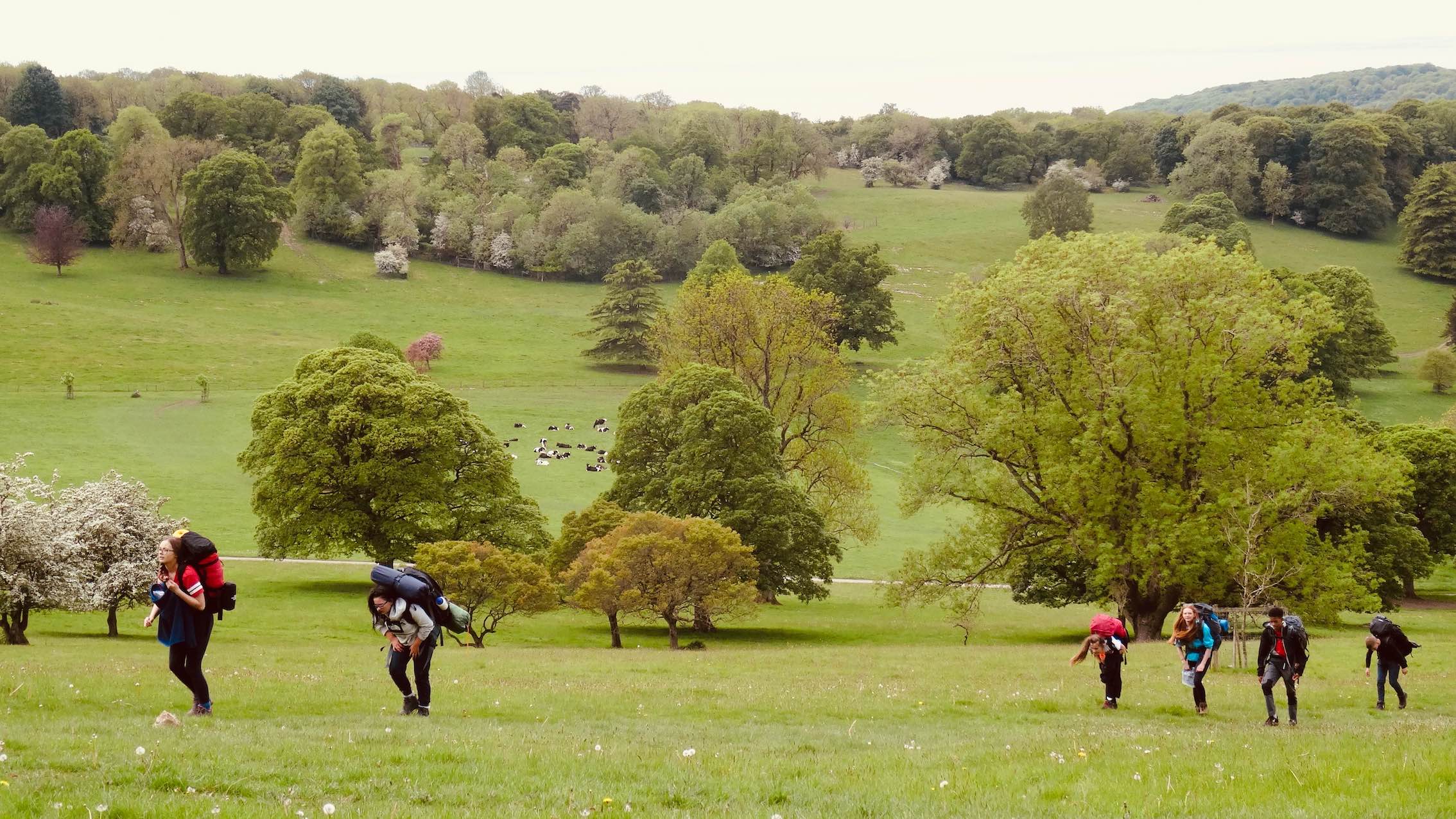
Leighton Moss Nature Reserve.
As we went, it was amusing to see an orienteering group pass by. Their leader was throwing out instructions, in an exasperated sort of way. I’m not sure what they were carrying in those backpacks, but a few of them appeared to be on the verge of toppling over under the weight.
“They’re doing the Duke of Edinburgh’s Award Scheme“ Uncle D explained. This brought back memories of my own DofE adventures back in my boarding school days as a teenager. Pretty sure I never made it to gold.
Exploring Lancashire.
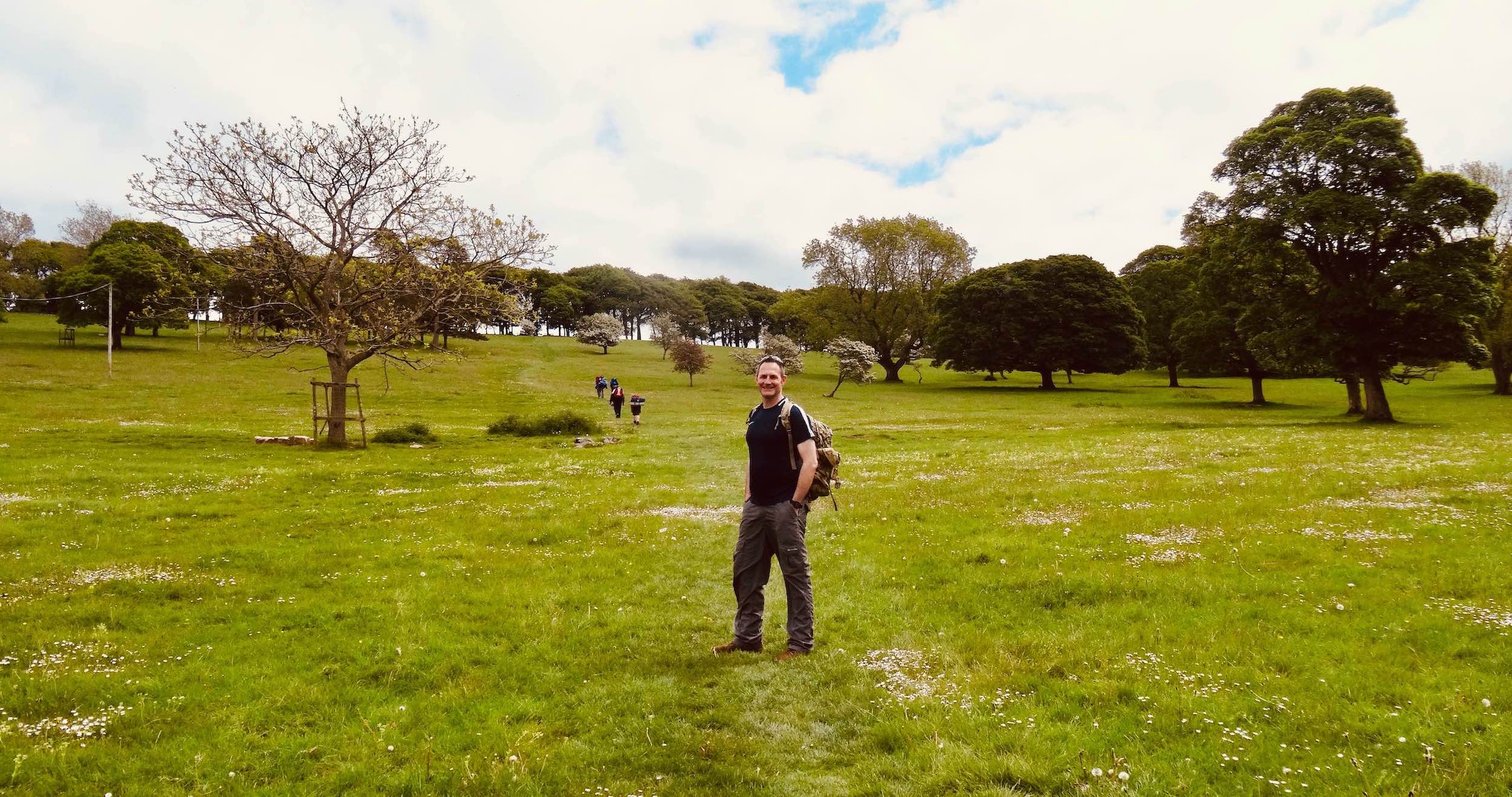
Uncle D.
At the top of the hill we paused for a well deserved breather. The views back down across the reserve and beyond were gorgeous. It was just us and a benched couple whispering together under the drooping branches of a nearby tree. The perfect spot to devour the little picnic we’d brought from home.
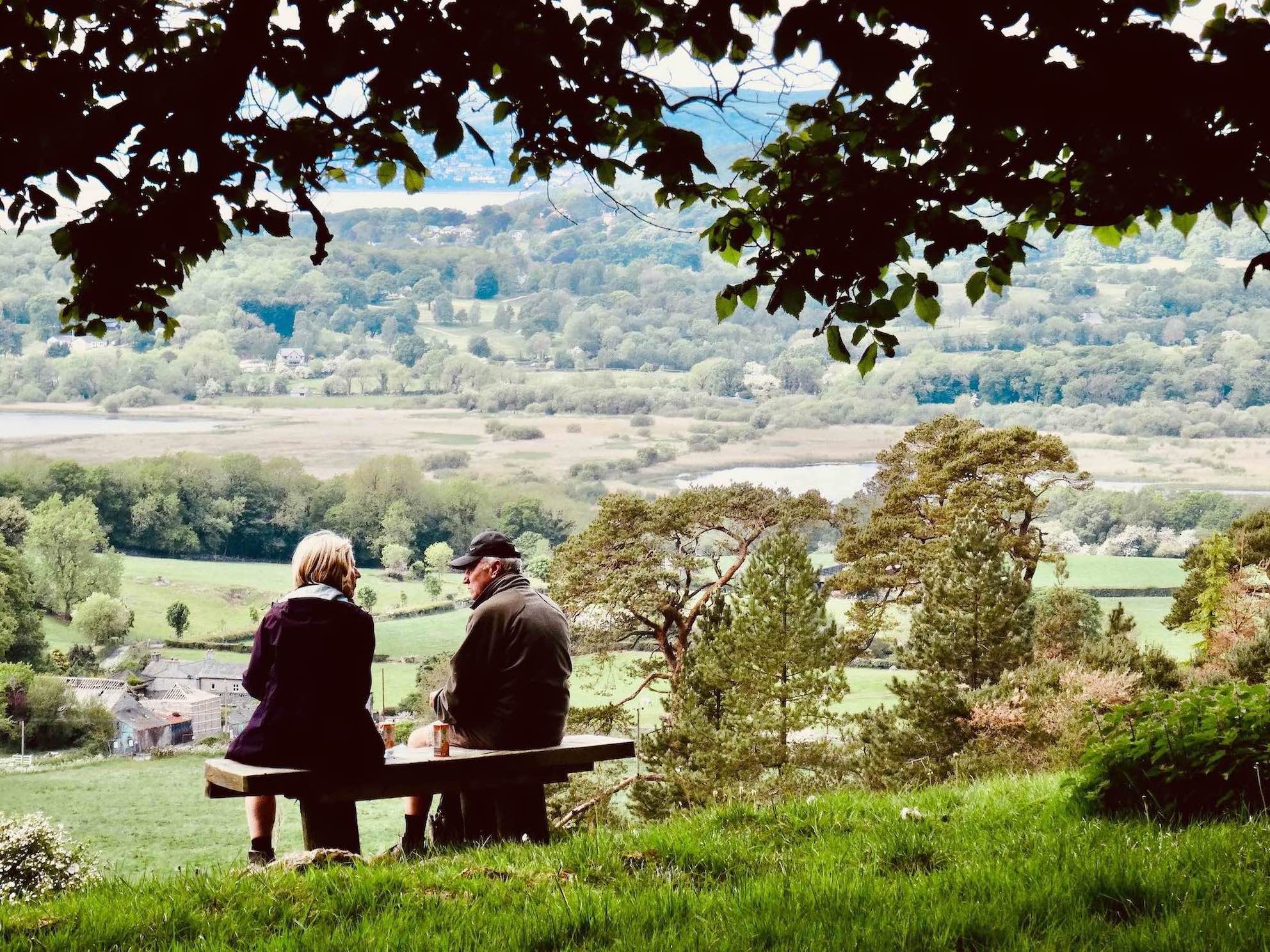
Leighton Moss Nature Reserve.
From there we edged out of Leighton Land on a route to Warton Crag Nature Reserve. Moving through Storrs Lane, we passed a few fine farmhouses and several fields inhabited by handsome horses.

En route to Warton Crag Nature Reserve.
At last, on Coach Lane, it was time to branch off onto Occupation Road. This would lead us deep into the reserve and up to the summit of Warton Crag. You can’t miss the turning off point, as it’s right to the side of Greylands, a splendid residence that stands as one of Warton Village’s most prestigious homes. Built in 2010, it has a modern, open plan design and excellent views over The Lune Valley.
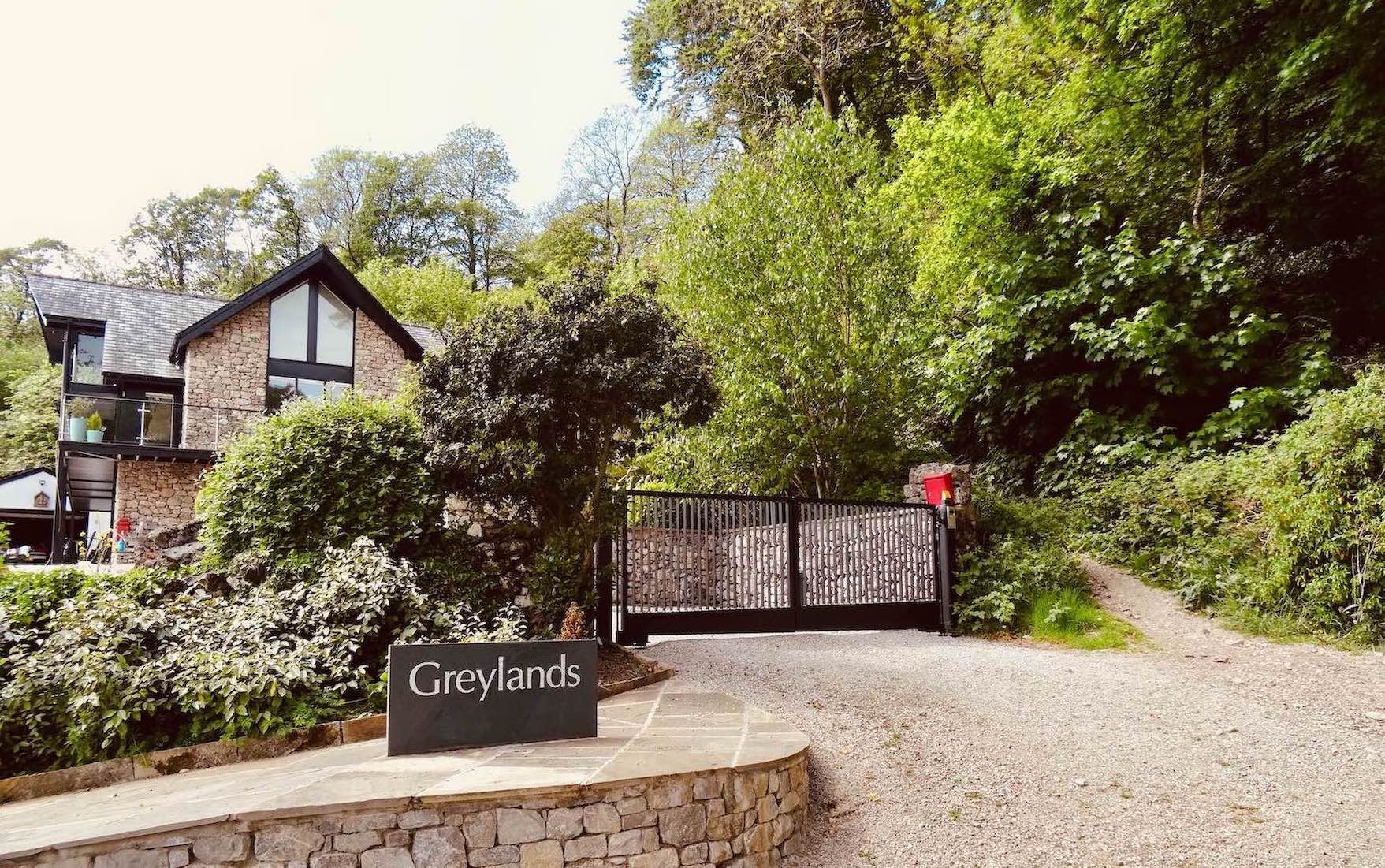
Leighton Moss Nature Reserve.
As for Occupation Road… well… it isn’t really a road. Rather, it’s an ascending stone bridal path that certainly requires a touch of fitness. Back in ancient times people from all over the region used the path to transport cattle back and forth to the various markets. Indeed some people still refer to the path as Old Drover’s Road in reference to the cattle drovers of yore.
Leighton Moss & Warton Crag Nature Reserves.
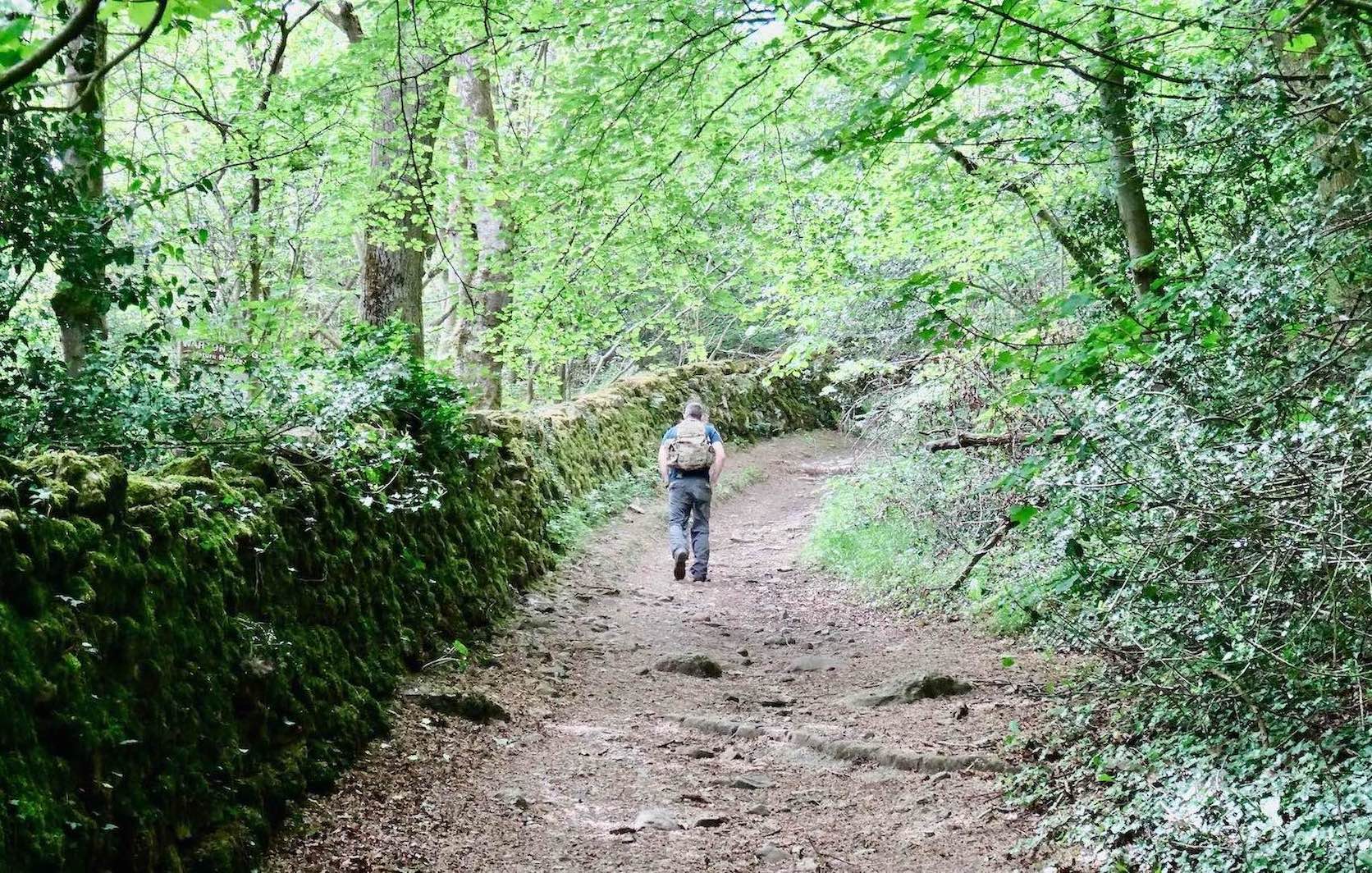
Warton Crag Nature Reserve.
Happily our efforts were well rewarded, the forest becoming thicker and more silent the further we progressed. As for Warton Crag itself, this limestone hill has a history of over ten thousand years. According to historians, there was once likely an Iron Age fort here. Indeed signs of early life have been uncovered in a number of caves, including markings and a handful of hunting artefacts.

Warton Crag Nature Reserve.
That day we were keen to head straight for the summit, a flat grassy platform with a trig point and a beacon. It was hard work scrambling up there but of course we managed and, lo and behold, the sky even celebrated our achievement with a bit of blue.
The beacon stands in honour of the bonfire lit atop the crag back in 1588. Its light was meant to warn people that the Spanish Armada would soon be advancing in a bid to relieve England of its protestant Elizabeth I. Thankfully such an invasion never came.
Warton Crag Nature Reserve.
From the top of the crag the views stretch… and stretch. Before us stood a breathtaking English vista over Carnforth Village, the city of Lancaster and of course the town of Morecambe and its pretty bay.
Exploring Lancashire.

Warton Crag Nature Reserve.
It was a lovely moment and a fitting end to a brilliant afternoon hiking through two of Lancashire’s most beautiful nature reserves.

Warton Crag Nature Reserve.
Below us, down in the village of Warton, lay a thoroughly deserved pint and some startling history. At least to me, who was as yet unaware of Warton Village’s bewitching backstory. More on that in my next post.

Warton Crag Nature Reserve.
Like this? Why not leaf through my other articles from Lancashire.
Or maybe take a look at my many travel articles from all around England.
I’ve been living, working and traveling all over the world since 2001. So why not check out my huge library of travel reports from over 30 countries.







43 Comments
Delightful! Thank you 😊
Thanks for dropping by!
This brought back.memories as my husband is a keen birdwatcher and member of the RSPB and I recall visiting here over 20 years ago with binoculars and spotting scope. I’m.not very good at birdwatching as by the time I’ve twiddled the dials on the binoculars into focus the bird has most likely flown away but I do enjoy seeing them on our garden feeders from the kitchen window. A great post as usual Leighton.
Thanks Marion, it’s great to hear about your own experience at Warton Crag. I have never really tried birdwatching and fear I would be similarly awkward with the equipment and timing. Appreciate your contribution Marion as always. Let’s hope March brings us a bit of warmth, how we all need it.
I always enjoy hiking and exploring places that bear the same name as me. I do not quite think of it as roaming my estate, but perhaps that of a more successful relative. Great views from the top of the crag. Thanks for sharing the adventure. Allan
We recently toured the Leighton Gallery in London’s V&A Museum, another pleasant surprise. If only I were a relative of these Leightons, I may have gotten an inside look or a bit of complimentary luxury. Oh well, I plod on like the modest under-celebrated travel blogger I am 😉 Cheers for visiting Allan.
I love a good nature reserve, and can’t help but think that hall should definitely be yours 🙂 I also absolutely love your photo of the couple on the bench, it’s so beautifully framed and I went back to it a couple of times. Lovely post as always.
Thanks Hannah, I might reference this comment when I eventually launch my campaign to have Leighton Hall transferred to my name. Appreciate your addition to the thread!
I am in full support 🙂
Look at you – famous with a park named after you 😉. How lucky are those eels to travel between the UK and The Bahamas! And you’re right, those backpacks are definitely not light – shame, some of them look really uncomfortable! What a great trail to end the day with such lovely views!
Hey Corna, it’s fun to share a bit of English hiking with you after all the South African hikes you’ve taken us on. Thanks for your comment as always.
wow, it’s like you stepped into a watercolor painting. What a lovely place you’ve taken us today!
Thanks for coming along Meg! The English countryside is really special and one of the great joys of this current visit, even in the often tough winter conditions. Happily, as the weather improves, these hikes and walks will get even better.
This looks like such an amazing and relaxing place to explore! You’ll have to go back to Leighton Hall one day. I have yet to find a Lyssy Hall haha 🙂
There will be a Lyssy Hall somewhere ha ha, you guys just have to track it down. A project for Jon perhaps? 😉
Might just have to build our own one day ha!
The view from the Warton Crag Nature Reserve is awesome!
Hey Allie, it certainly is and it’s a pleasing contrast to the mostly flat delights of Leighton Moss. Thanks for reading and leaving a comment.
Wow you have a park and a palace! Lucky you! I knew that eels were common in UK but didn’t know of their lifelong travel between Bahamas and UK. That’s quite impressive, even though I don’t like the slimy things. The marshland, forest and hilltop views look lovely. Looking forward to stories about witches 🙂 Maggie
That parkland and palace really should be mine, I’m trying to find out who I should complain to. I’m with you on the eels Maggie, I think I tried one once… never again. Glad you enjoyed this gorgeous slab of northwest England.
Everyone should have an Uncle D. You undoubtedly could have managed these on your own but it must have been much more enjoyable with his company. I would have preferred the Leighton Moss part as trudging up a hill is not inviting (even though the views from the top were impressive). Glad you had a picture of the hide. I was visualizing a small hut like a hunter’s blind. This one was huge by comparison. I was told once that all eels in the North Atlantic and the rivers that feed into it spawn in the Bahamas. Kind of an international honeymoon spot.
The Bahamas aspect of the eel story was a genuine revelation to me. Although I have to stay if I had to do that kind of colossal swim I’d be heading to The Bahamas with no particular plan to come back. The hides were more like long sheds really, I agree the name is misleading. Thanks for visiting Memo.
So eels were the first European visitors to the Americas. Neat! 😄
Ha ha I guess you’re right! #eelsrule
It must’ve been fun exploring the area named after you (or were you named after it? Guess we’ll never know, haha!). All the same, to check out the reserve and its wildlife must’ve been a welcomed change of pace and scenery after the big cities and towns you visited.
I think it would have been a bit more glamorous if I’d have been named after this grand country estate 🙂 Instead, I was named after a shaggy looking Welsh footballer, Leighton James.
Sounds like you had a wonderful day of hiking and soaking in the natural sights. How fun that one of the nature reserves shares the same name as you. That alone makes it worth visiting! I’m such a fan of wetlands and I love all the reed beds.
I thought this piece would be right up your street! You guys would be right at home exploring these reserves I’m sure. They should give out badges in England too.
Wow, I didn’t know you’re so famous, Leighton😍
A fine day to be outdoors, and great stories! I didn’t know the eels travel for so long, so impressive. The nature and the birds make a perfect destination, I would love to visit one day!
Famous in my own head ha ha. Thanks for dropping by and leaving a comment Christie. Glad you enjoyed this look at Leighton Moss and Warton Crag.
Pleased to see you’re enjoying being back in England, Leighton. Must feel almost like being a foreign tourist!
This piece is from my 2019 England adventures. Three years later and I’ll be heading back up that way with Sladja to see a bit more of the region. At times I do feel a bit like a foreign tourist.
Wow, what a wonderful place! I especially love the designated area for birdwatching enthusiasts! It is a wonderful pastime for many reasons one of them being it helps you connect with nature. If you start birdwatching, you’ll start to pay closer attention to nature. Birds don’t live in isolation– each species interacts with numerous other animals and plants, as well as elements of the non-living world such as geologic formations and weather systems. You can begin to understand the interconnections among all of these things in nature by paying some attention to birds. Thanks for sharing and have a good day 🙂 Aiva
Guess I’d need to start with a pair of binoculars! Thanks for visiting Aiva.
The English Countryside is such is such a uniquely beautiful place. Your photos and descriptions capture it well.
Thanks for visiting this idyllic corner of Lancashire with me. My uncle is lucky to live in such an unspoilt region of the country!
Looks absolutely beautiful! Thanks 😊
Thanks for dropping by Rosa, it’s a lovely corner of England with some decent history to boot.
It is indeed! It’s on my list of things to do to head over there and check out all the amazing history and scenery!
It must be very intriguing to discover a park called after your name, it’s lucky that it turns out to be a beautiful place, it’s better not to imagine otherwise. Thanks for the tour.
There’s also a handsome looking town outside London called Leighton Buzzard, though I haven’t yet visited. I feel an untapped source of themed blog post potential here..
This looks like a lovely place to walk. What a calm and natural area to live in. I don’t imagine you were named for any of the sights in this area, but it’s fun to feel a connection.
Thanks Ruth, you’re right, I was named after a hairy Welsh footballer (soccer player) called Leighton James. How’s that for the other end of the spectrum?!